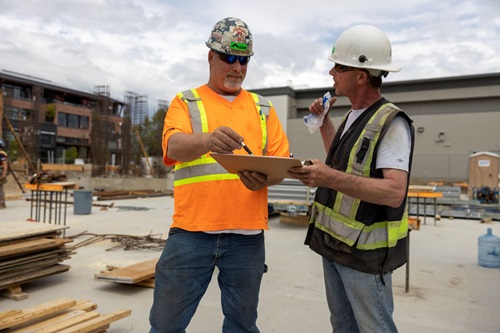 Friday, May 3, 2024
Friday, May 3, 2024  Friday, May 3, 2024
Friday, May 3, 2024 
WorkSafeBC’s inspectional approach for construction in 2024 aims to reduce the number of serious and fatal injuries in the sector.
Statistics from WorkSafeBC show that the construction sector in B.C. had a time-loss claims rate that was 24 per cent higher than the provincial average for all sectors. Across B.C., the time-loss claims rate was 2.40 per 100 workers in 2022, while in construction it was 2.98.
“Our 2024 inspectional initiatives focus on the sectors that have the highest risk of serious injury, and that includes construction,” says Suzana Prpic, Senior Manager, Prevention Field Services at WorkSafeBC. “The goal of our inspectional approach for construction is to work with stakeholders to reduce the risk of injury to workers in the industry.”
WorkSafeBC’s inspectional initiative for construction comprises proactive, unannounced inspections, and takes a risk-based approach to ensure the most significant risks are being effectively managed. For 2024, the focus is on the following areas:
WorkSafeBC stresses that effective risk management is critical in keeping workers safe. Construction employers must take a proactive approach and collaborate with workers, worker representatives, or joint health and safety committees to identify potential hazards, evaluate risks, and implement measures to control them.
Employers must also ensure risk management plans are effectively communicated to workers through orientations, training, supervision, incident investigations, worksite inspections, and, where applicable, joint health and safety committees.
Prime contractors play a pivotal role on multi-employer construction sites and have a legal responsibility to create and implement site-specific safety plans tailored to each project’s unique risks and hazards. Prime contractors are responsible for coordinating site activities across the entire worksite to ensure the safety of all workers.
“Construction sites are dynamic and constantly changing, that’s why risk assessments and control measures need to continually be reviewed and updated,” says Prpic. “An effective risk management program must involve ongoing collaboration with workers at every step. You want to ensure your workers feel valued and empowered to contribute to a safer workplace. This not only strengthens the overall health and safety culture but also enhances job satisfaction and productivity.”
WorkSafeBC’s Planned Inspectional Initiatives identify and target industries and employers with a high risk of serious workplace injury and a significant contribution to the serious injury rate and the time-loss claims rate. Based on these factors, construction, forestry, health care and social services, and manufacturing are identified as high-risk sectors.
Check out more news and blogs here